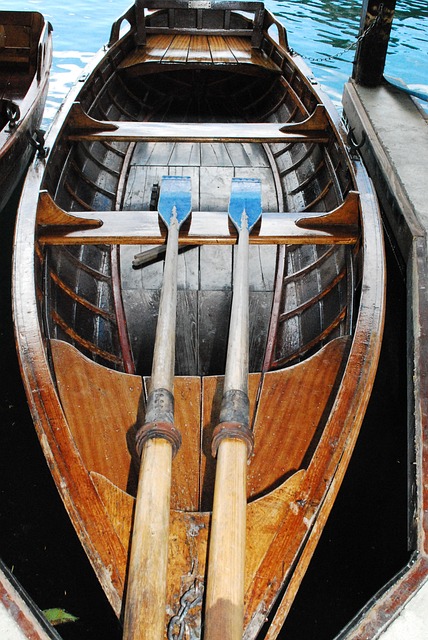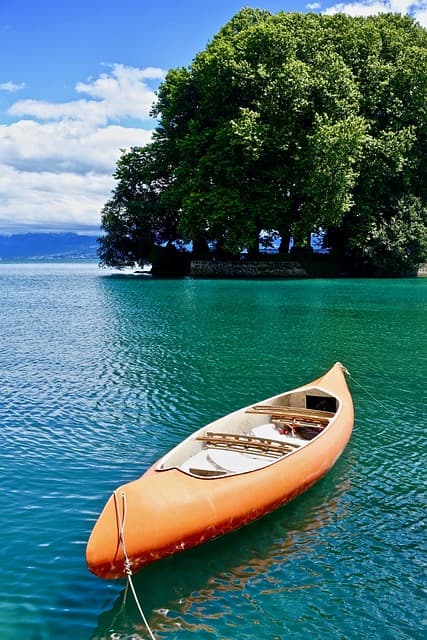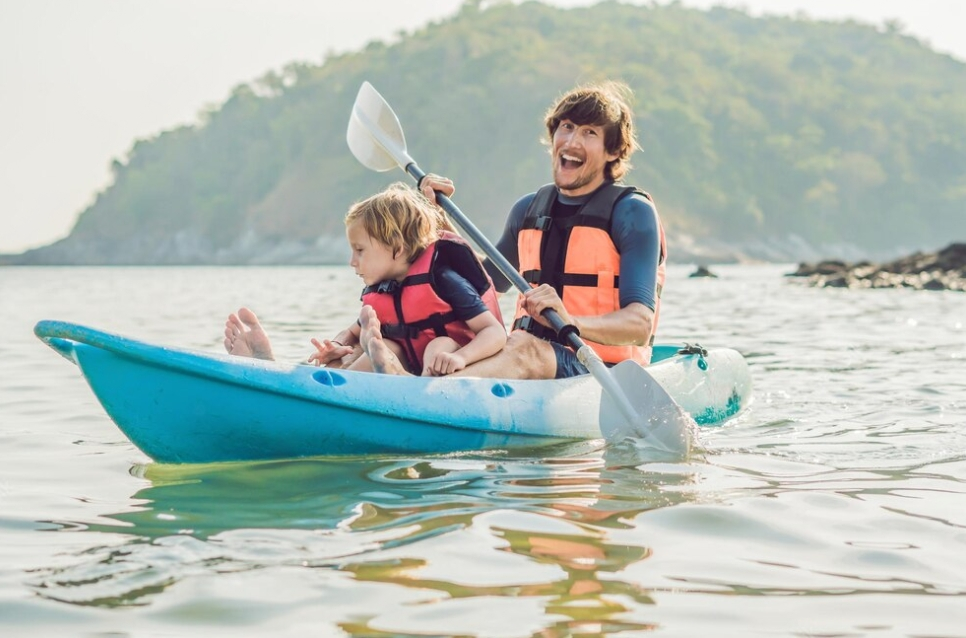Spending time outdoors isn’t just about fresh air; it’s a mental reset and a boost for staying active. Kayaking, beyond being loads of fun, is a wholesome activity that not only burns off excess energy but also nurtures a genuine connection with nature. And the cherry on top? It’s a splendid family affair, too!
Now, when it comes to kayaking with a baby, the rulebook doesn’t set an age limit. But, here’s the deal: bringing a newborn or infant (0-12 months) on a kayak ride isn’t advised. The rationale isn’t solely age-based; it leans more towards gauging the baby’s capability and maturity. Safety is our North Star, so it’s wise to tread cautiously and prep meticulously before sailing out.
Speaking of sailing with the little ones, the focus shifts from age to ability and maturity. It’s not about counting the years, but rather assessing whether the child can handle it. Safety, my friend, is the ringleader here, and precautions reign supreme before plunging into aquatic adventures.
Navigational Tips for Kayaking with Kids
As per guidance from the U.S. Coast Guard, the ages between 2 and 5 serve as suitable starting points for introducing children to kayaking. However, during this phase, it’s recommended that they share a kayak with a parent or responsible adult. If you’re planning an outing with a toddler, these are the key ground rules:
- Ability to Sit Still: Your little adventurer should be able to maintain a seated position without much fuss;
- Independent Floating: It’s best if your toddler can comfortably float on their own in the water;
- Minimum Weight: To ensure stability, your child should weigh at least 18 pounds;
- Secure Personal Flotation Device: Your toddler must wear a well-fitted personal floatation device for enhanced safety.
It’s crucial to note that infants who haven’t reached the stage of fitting into a suitable personal floatation device should not be taken out on a kayak adventure. Safety first!
Where to Go Kayaking with the Whole Family
When you’re kayaking with your kids, opt for tranquil waters initially. Steering clear of strong currents when you’re still getting the hang of it is a must. As you and your child gain more proficiency, you can gradually explore different environments with confidence.
Before you venture out, it’s a wise move to research the currents and kayak traffic of your chosen location. Getting acquainted with potential hazards is essential, as some are more obvious than others.
For a deeper dive into the unforeseen risks of kayaking, consider reading “Kayak Fishing is More Dangerous Than You Think, Here’s Why.” It sheds light on the shared waters between recreational kayakers and kayak anglers, making it a pertinent read for anyone seeking a peaceful glide on calm waters.
The Right Age for Kayaking Adventures
For children under 8 years old, opting for a tandem kayak alongside a parent or adult is ideal. Placing the child in the front seat allows for better supervision while paddling. Kids aged 8 and above can venture into double kayaks with an adult, a perfect opportunity to develop some paddling prowess.
As they cross the threshold of 10 years, children can graduate to using single rider kayaks designed specifically for their age group. However, it’s imperative that an adult accompanies them on the water.
Upon reaching 14 years, if equipped with adequate paddling skills and experience, youngsters can confidently transition to using regular-sized kayaks for more independent adventures.
Prioritizing Safety on the Water
Ensuring your waterborne journey is safe begins with having the right safety equipment. Seek out a personal floatation device (PFD) approved by the U.S. Coast Guard and meticulously adhere to the usage and sizing instructions. PFDs are categorized based on weight:
| Age Group | Weight Range (pounds) |
|---|---|
| Infants | 8-30 |
| Children | 30-50 |
| Youth | 50-90 |
The pivotal choice revolves around selecting a suitable PFD for your child. Opt for a high-quality vest that fits snugly, as this decision holds paramount importance. Life is unpredictable, and being well-prepared is a must.
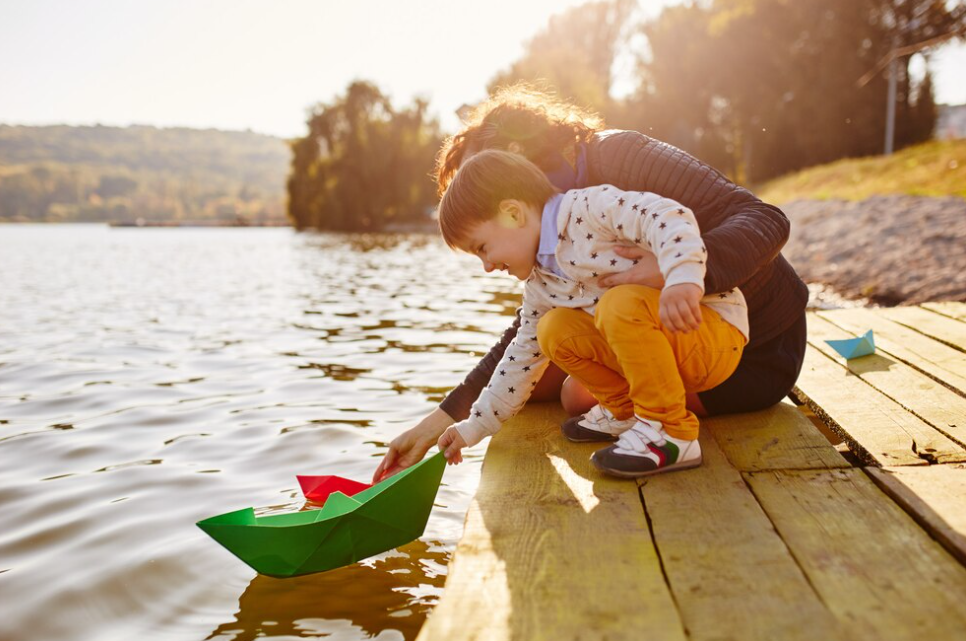
Since toddlers may not immediately embrace their floatation devices, practicing the vest routine at home can help them grow accustomed to wearing it before hitting the water.
Avoid tethering or tying your child to the boat, as this actually increases risks. If concerns arise about your child’s ability to remain seated while afloat, it might be an indication that they’re not quite ready for this adventure.
Considering the extended sun exposure during your aquatic escapade, safeguarding against sunburn is crucial. Arm yourself with sunscreen to reapply every two hours, while a sun hat and sunglasses also offer added protection.
Appropriate Attire for Kayaking
Opting for water-resistant attire while kayaking proves beneficial, given the likelihood of encountering a bit of water. Especially for children, who tend to gravitate toward wet and messy situations, packing spare clothing is wise. Store the extra clothes within a waterproof bag to ensure they remain dry.
For those planning to take a refreshing swim, it’s advisable to include a bathing suit in your packing list.
On-Water Activities: Your Action Plan
When you’re out on the water, prioritizing everyone’s safety and comfort is a must. However, riding with children necessitates additional precautions beyond solo kayaking.
Take it easy
Adjust your speed to a more relaxed tempo than your usual pace. If you’re part of a kayaking group, ensure everyone maintains proximity for easy communication. Racing ahead with a young child onboard might lead to their instability and potential capsizing.
Establish guidelines
Prior to embarking, establish a clear set of guidelines. For children accompanying you in a tandem kayak, these regulations should be observed:
- Avoid standing;
- Refrain from extending outside the kayak;
- No jumping;
- Do not lean excessively;
- Keep the life jacket on at all times.
Guidelines for solo child kayakers:
- Maintain close proximity for communication;
- Ensure the life jacket is worn consistently;
- Refrain from engaging in playful or risky behavior;
- Remain seated throughout the kayaking experience.
Foster confidence
Support the slowest paddler to lead, ensuring they feel valued and not left behind. By doing so, they can relish the experience and shed any inadequacy concerns. Allow children to take turns, if more than one, to promote inclusion. When kayaking with a young companion, give them a chance to paddle and gain valuable experience.
Embrace enjoyment
Pause periodically for everyone to regain their breath and recenter. Save criticism for matters of safety. Celebrate effective paddling with positive reinforcement. Grant each person the opportunity to revel in the moment.
Stay ready
Recognize that young children may grow restless quickly. Remain relatively close to the shore to address potential restlessness and lapses in safety attentiveness. Be prepared for unforeseen circumstances, potentially altering your intended water time. Bring along engaging activities and snacks to keep the child entertained.
Comparing Sit-On-Top Kayaks and Sit-Inside Kayaks
- Sit-on-top kayaks lack an enclosed cockpit, positioning the paddler on the kayak’s surface above the water level;
- Sit-inside kayaks feature an enclosed cockpit, with the paddler seated inside the kayak either at or below the water level.
Choosing the right option for children
When it comes to young or novice kayakers, opting for a sit-inside cockpit is recommended. This design offers ample space for movement and reduces the likelihood of accidental falls. On the other hand, older children might find sit-on-top kayaks appealing due to their easier paddling and the freedom to jump into the water for a swim.
Benefits of sit-on-top kayaks
Both kayak types offer unique advantages; here are the benefits associated with sit-on-top kayaks:
- Enhanced mobility in case of capsizing;
- Elevated center of gravity and wider design for heightened stability;
- Unsinkable construction;
- Spacious rear tank well for accommodating larger items;
- Incorporation of self-bailing scupper holes to facilitate water drainage.
A common query among new paddlers is whether sit-on-top kayaks can sink and if they provide a safer option than sit-in kayaks. If you’re curious, I’ve penned a comprehensive article on this topic.
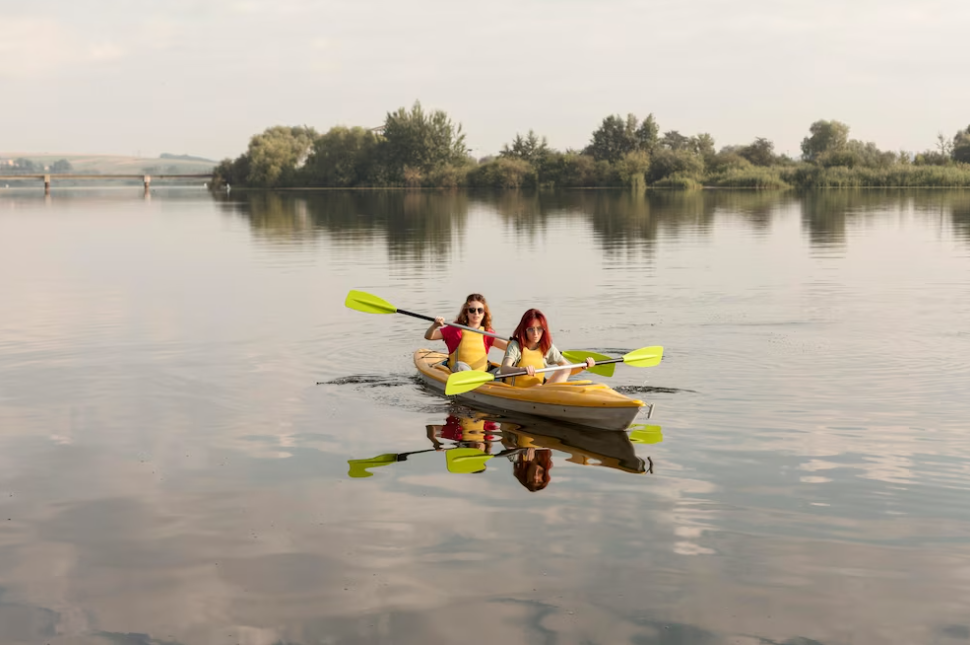
Benefits of Sit-Inside Kayaks
Selecting between different kayak types ultimately depends on individual preferences. Here are the advantages associated with sit-inside kayaks:
- Lower center of gravity facilitates efficient leaning for improved turning;
- Narrower design enhances speed;
- Demands less exertion from the paddler;
- Option to sit back on knees boosts paddler control;
- Enhanced sun protection;
- Reduced impact from wind conditions.
Conclusion
In the realm of kayaking with kids, safety and enjoyment go hand in hand. By following these tips and guidelines, you can ensure memorable and secure adventures on the water. Prioritize communication, select appropriate kayaks, and establish clear rules to make the experience not only exciting but also safe for everyone involved. Happy kayaking!
